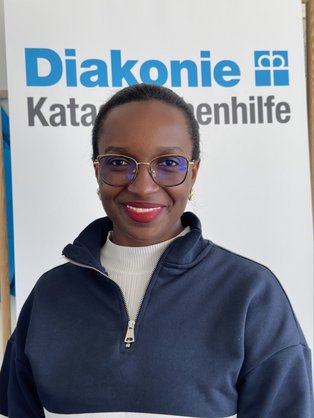“The local communities know their context better, and we must listen to them”
In the interview, Linda Bauma, Regional Coordinator for the ToGETHER Programme at Diakonie Katastrophenhilfe, highlights how local communities in the Democratic Republic of the Congo and Somalia lead humanitarian projects. She addresses challenges like power imbalances and funding issues, emphasising the ToGETHER Programme's role in strengthening local capacities through participatory methods to ensure projects effectively meet community needs.
How do local partner organisations contribute to the effectiveness of humanitarian projects?
In the DRC and Somalia, where Diakonie Katastrophenhilfe is responsible for the ToGETHER Programme, the local humanitarian partners are actually the leaders of the programme. What they do is contribute to the coordination of humanitarian action. They also implement the projects in direct collaboration with the communities, and they advocate for better humanitarian action and greater recognition of local voices and actors in humanitarian action.
What challenges do local humanitarian partners face?
The localisation process itself must be recognised as a transformative process. This means it goes from where we are now, or maybe where we have been before, where the international organisations are leading the humanitarian response, to a point where we are changing the balance of power. Power imbalances are one of the big challenges that we have in the localisation process.
The second challenge is the existing funding mechanisms, which are not flexible enough and through which local partners do not actually receive the funds directly. These respond to the needs that come from the communities. These are two of the biggest challenges we currently face in responding appropriately to the needs of communities.
How does the project help the communities to overcome these challenges?
As part of the ToGETHER project, we are strengthening the capacities of local partners. So that they are not only able to provide more effective humanitarian aid, but also have the institutional capacity to fundraise better, position themselves as leaders in the humanitarian system and also articulate the needs of the community because they know better what the community needs.
You talked about the community needs. Can you tell us more about the partner engagement with them? How does that work?
In DR Congo, as in Somalia, we use a lot of participatory methods for project design and implementation in the ToGETHER programme. Initially, we started with the People-First Impact Method, which actually requires the humanitarian workers to sit with the people in the communities and listen to them, get their feedback and then design the project with them. Now we're even using more of the SCLR [supporting community-led response] method, which also allows us to grow because it's a community-led response.
These communities will design their project themselves and come to the ToGETHER partners to bring these projects to life, and that's how we implement it. We implement all projects with them because we want the project to respond effectively to the specific needs of the community.
Can you give an example of one of these projects?
In the DR Congo, one of the most tangible examples of how we work with communities is the design of a project by a partner organisation in South Kivu. It was about providing basic accommodation for affected population groups. There is a high risk of flooding in the affected communities in the Kalehe region of South Kivu. The communities knew exactly where the floods would come from and chose the places where the shelters would have to be built, on the mountain side. Later, when the floods came, all the houses that were in the valley were actually caught in the floods. Those shelters that remained were the ones on the mountain side, and that actually helped us understand that the local communities know their context better and we must listen to them.
Background
The ToGETHER Programme (Towards Greater Effectiveness and Timeliness in Humanitarian Emergency Response) is a comprehensive programme that aims to promote the localisation of humanitarian action. It strengthens the institutional and operational capacities of participating partners, promotes local leadership and fosters cross-border learning and exchange.
The programme is implemented in Bangladesh, Colombia, DR Congo, Ethiopia, Indonesia, Myanmar, Pakistan, and Somalia. Forty local humanitarian partners and four international consortium partners from Germany (Caritas International, Diakonie Katastrophenhilfe, Malteser International, and the consortium lead, Welthungerhilfe) are involved in the programme. It is financially supported by the German Federal Foreign Office.

